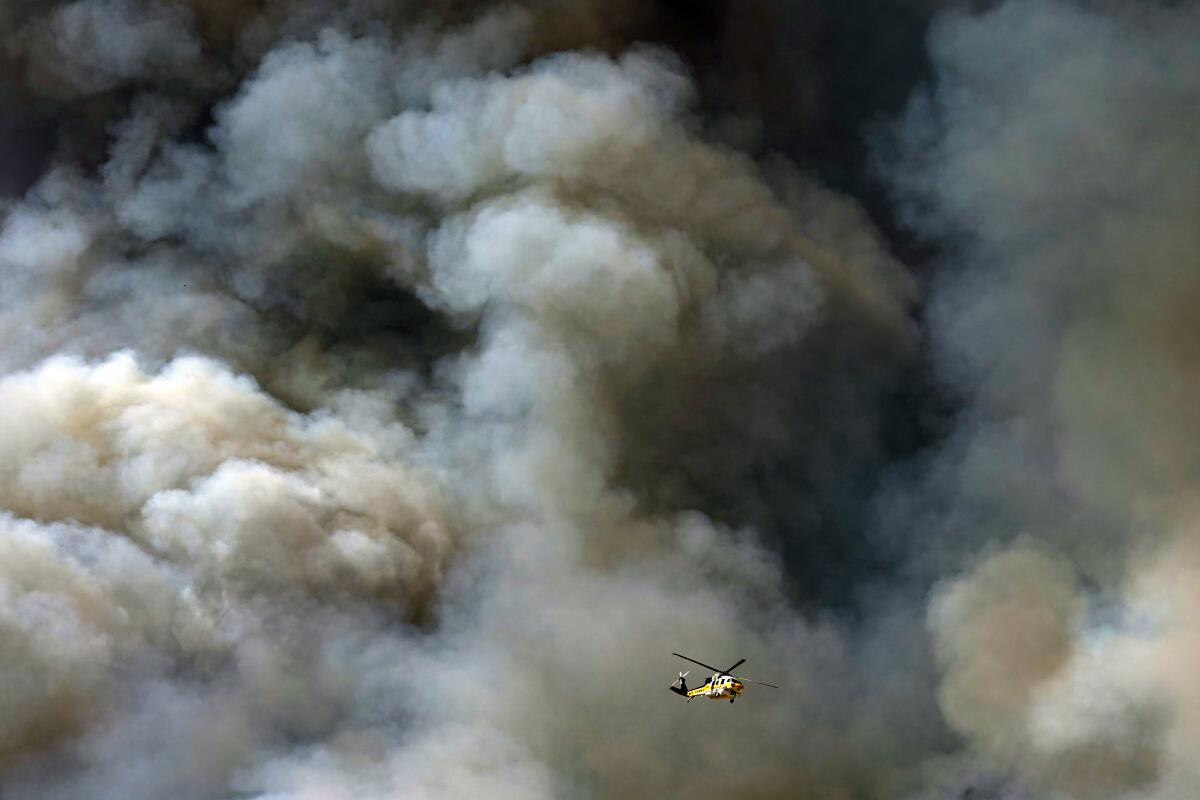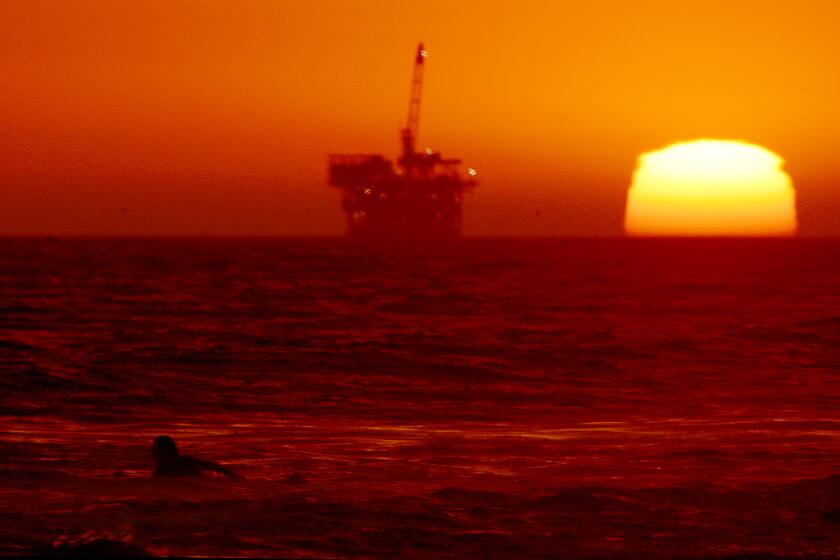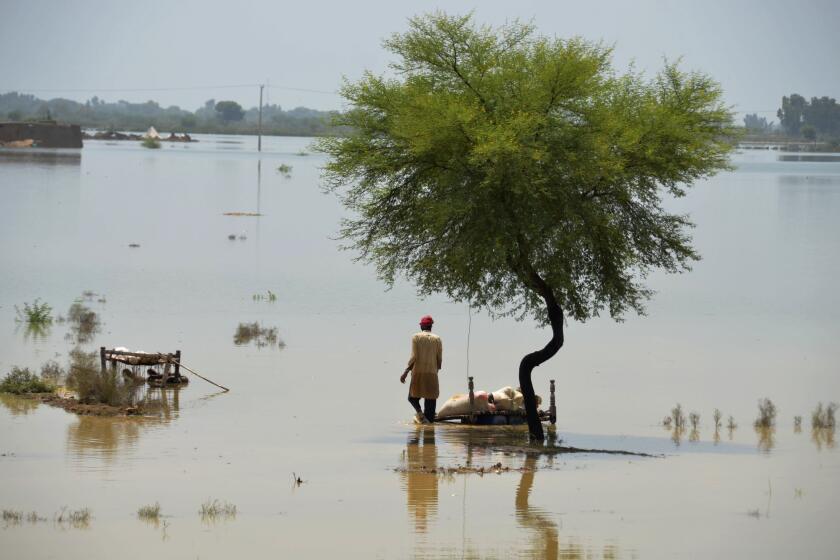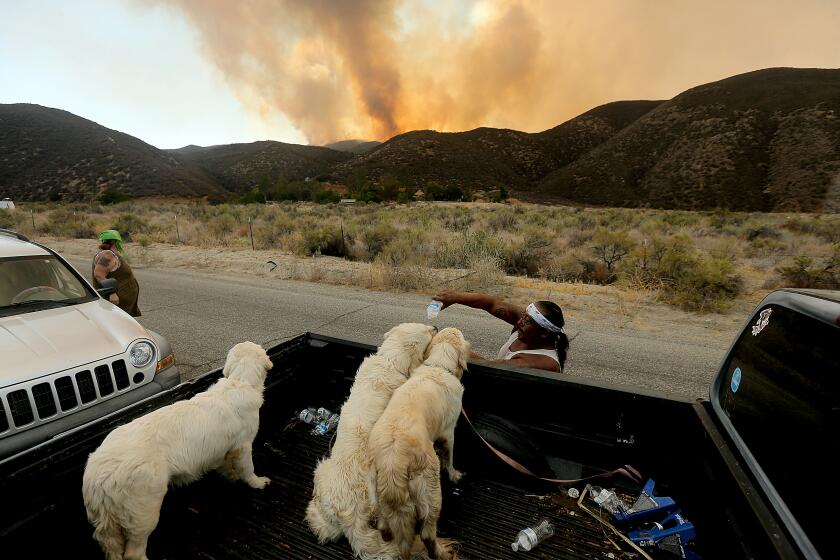Op-Ed: Our too little, too late climate action means triage more than prevention

- Share via
Two years ago the sky above my San Francisco Bay Area home was a dark pumpkin orange from wildfire smoke. The air smelled of wood fire, and gray ash covered my car. Today the bay’s waters are dark brown from a harmful algal bloom and the air smells of decay and dead fish.
Both incidents, like the heat dome California’s been suffering under since last week, have links to climate change. It used to be that climate emergencies happened somewhere else. But now they’re coming to a neighborhood near you.
We could have prevented it, but we failed to do what was required.
The California Independent System Operator had issued a level 3 alert, a sign that the grid couldn’t meet the state’s electrical needs.
With the Inflation Reduction Act in August, President Biden signed the first major climate bill in U.S. history. We need to view its provisions and incentives less as putting an end to heat waves, wildfires and algal blooms and more as triage — doing what we can while we can to salvage what we might.
I remember reporting from the 1992 Earth Summit in Rio de Janeiro when the U.S. delegation promised to reduce America’s carbon dioxide emissions to 1990 levels by the year 2000 (then-Sen. Al Gore called that pitiful).
Five years later, while trying to save another climate agreement in Kyoto, Japan, then-Vice President Gore pledged to reduce U.S. emissions to 1990 levels by 2010.
The Inflation Reduction Act could potentially produce a 40% reduction of greenhouse gases by 2030, based on 2005 emissions (16% higher than 1990’s). But the 10 hottest years in recorded history all occurred since 2005, and the heat already built into the system makes it unlikely that we will limit warming to 1.5 degrees Celsius, the difference between dangerous and catastrophic impacts. This summer has given us a hint of what catastrophic climate conditions look like.
In the past several months, wildfires, “thousand-year” floods, megadroughts and heat waves have raged in northern China and North America, in Europe, India, Pakistan and Africa. Thousands of people have died of heatstroke or drowned in massive floods. Hundreds of thousands are facing imminent starvation or migration.
Pakistan faces some $10 billion in flood damage. It’s too late to ask who is responsible for climate change, we need to know how we can survive such devastation.
In August, a new study showed that wildfires are now consuming twice as much global tree cover as they did in 2001, converting forests from carbon sinks into carbon emitters, marking a “fire-climate feedback loop,” one of the warming accelerants that scientists have long warned about.
As major climate effects move from risk to inevitability, our challenge is to do all we can to not only reduce emissions, but also to remove greenhouse gases from the atmosphere by every means at our disposal.
The global average atmospheric level of carbon dioxide (a major greenhouse gas) set a new high in 2022: 421 parts per million versus the 280 parts per million before coal- and oil-fired industrialization began scaling up in the 1800s.
Among the options for resetting those figures: planting more urban and wild forests, including marine mangrove, seaweed and kelp forests, and transitioning to “regenerative agriculture” by building healthy soils, rich in earthworms, bugs and bacteria, that can absorb vast amounts of carbon dioxide.
The hope is that if we commit the remainder of this century to a new human enterprise of green transition and restoration, there might still be 10% of today’s tropical reefs and redwoods left at the end of the century along with remnant populations of wildlife, plus sufficient foodstuffs for a human population that increases by about 1% yearly and has more than doubled since the first Earth Day in 1970.
Some of today’s economic trends and social movements, including the movement to divest from fossil fuel companies and direct capital to renewables instead, offer a modicum of hope that “too little” and “too late” can still translate into “do more” and “never say never.”
The market for clean energy, for example, has exploded in the last five years so that now new solar and wind energy is overall cheaper (and more job intensive) than fossil fuels. Plus the demand for green infrastructure and production that the new Inflation Reduction Act is likely to supercharge, along with state-level actions such as California’s ban on the sale of new gasoline cars after 2035, could create a new wave of green innovation and action — a positive climate feedback loop.
It’s unclear what the ‘circuit activity’ was or whether Southern California Edison’s equipment played a role
It might be too late to turn the tide against global disaster and extinction, but we don’t know because it’s not that easy to read the future. The first 1990 report of the Intergovernmental Panel on Climate Change, for example, badly underestimated what we’d likely be seeing by the 2020s. Perhaps the crises we’re living through today make it hard to see what triage could still salvage.
We know we all lose if we don’t capitalize on — and move well beyond — the climate incentives in the Inflation Reduction Act. We have little choice. It will take an all-out effort to defend our home planet and ourselves, come what may.
David Helvarg is an author, executive director of Blue Frontier, an ocean conservation group and co-host of “Rising Tide: The Ocean Podcast.” He began reporting on climate in 1982.
More to Read
A cure for the common opinion
Get thought-provoking perspectives with our weekly newsletter.
You may occasionally receive promotional content from the Los Angeles Times.













